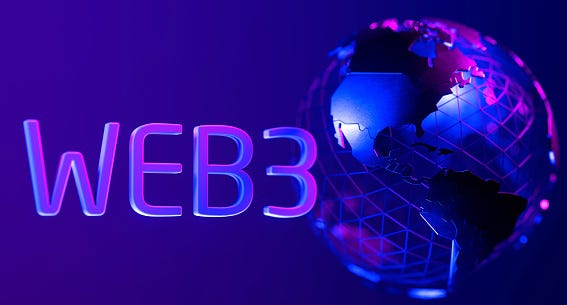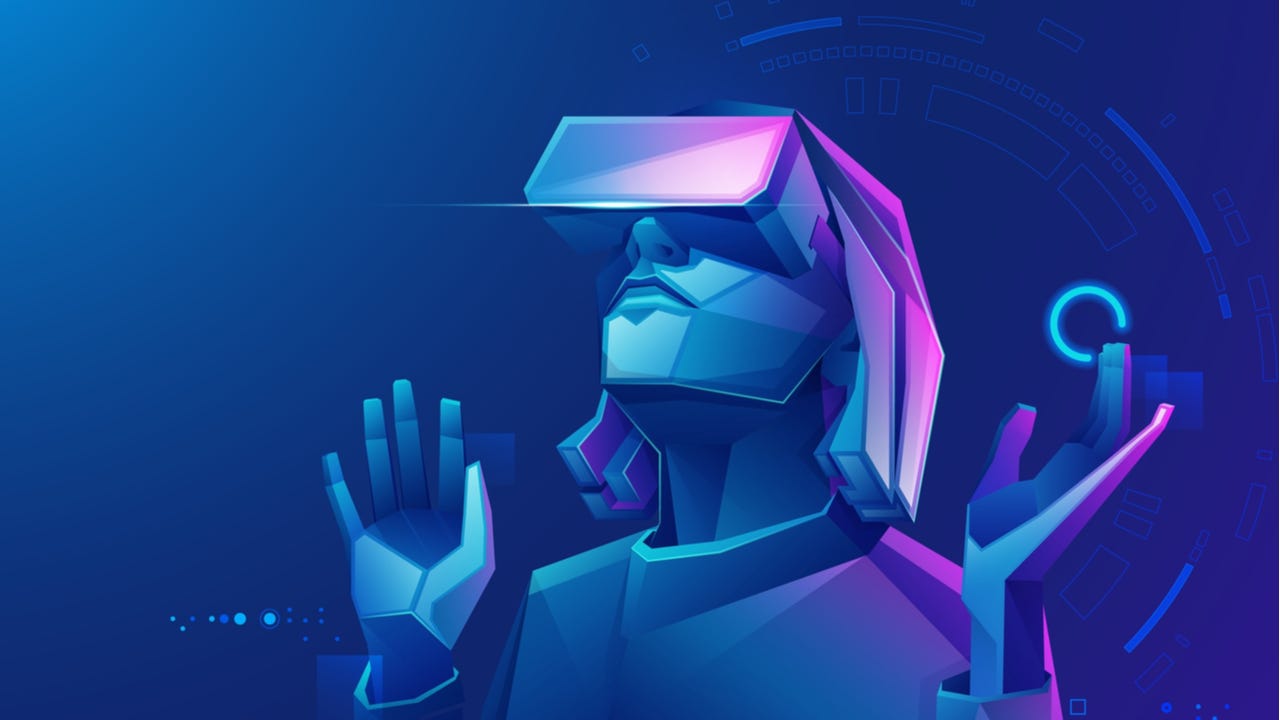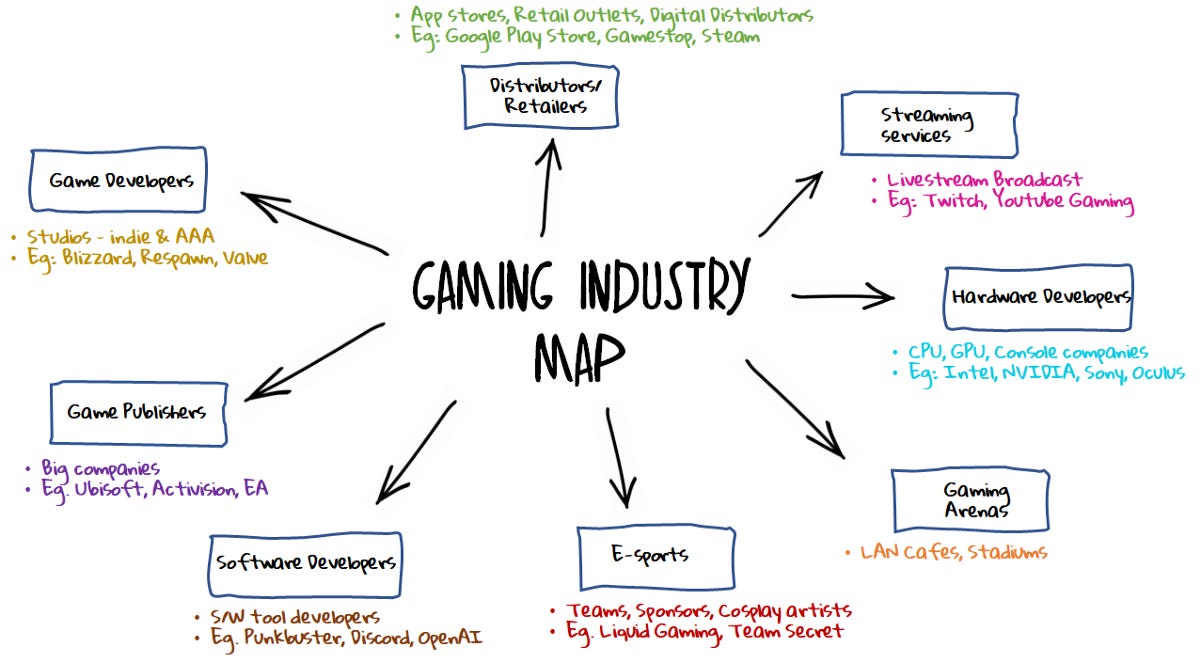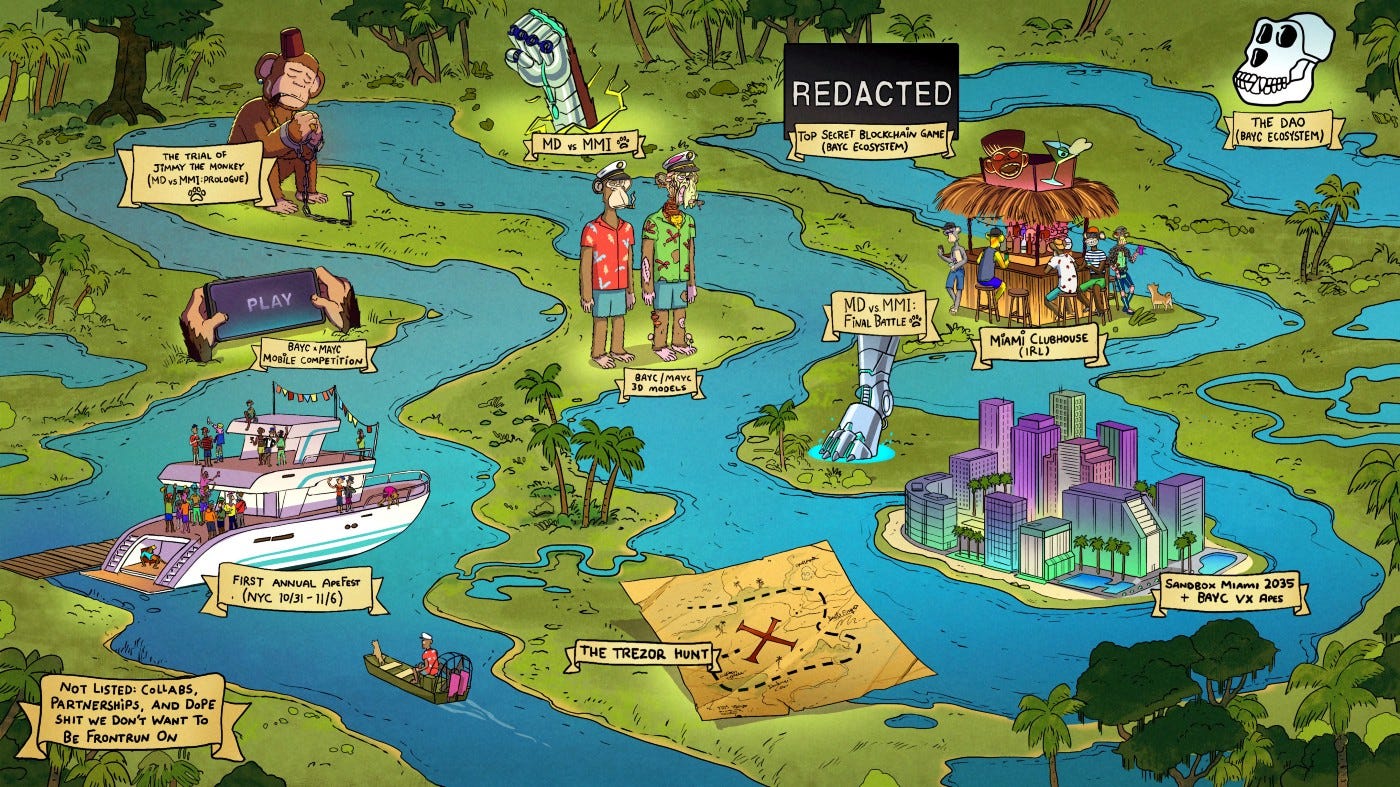Web2 to Web3: There has been commentary lately that Web3 has been overhyped. What the conversation is missing is a close look at how both mindsets co-exist. We won’t even notice when we all change over to Web3.
Today, the internet is at the threshold of another technological leap. But this time, it isn’t so much about the devices that act as our portals to the web, or the places where we can access it. Today’s Internet is about to make the jump from the centralized, application-centric infrastructure of Web2 into the intelligent, user-centric architecture of Web3. And this time, the technology that will support this leap isn’t any kind of physical system – instead, the transition into Web3 will run on fully-digital wallets and tokens.
But before we leap forward into Web3, we must take a step backward – to Web2.
Web2 is the on-ramp for Web3
When we think of the future, it’s easy to contract a case of what I’ll refer to as “Space Odyssey syndrome.” The iconic 1968 film by Stanley Kubrick depicted the year 2001 as a high-tech, alien world that was vastly different from the year that eventually came. (If you were around in 2001, I’m sure you’ll recall the distinct lack of lunar hotels.)
And when many people think of Web3 adoption, it’s easy to picture a leap straight into the metaverse: people walking around in virtual worlds, touting wearable NFTs, collecting their salaries in Dogecoin, and communicating exclusively via encrypted messages.
The truth, however, is that Web3 adoption will look and feel a lot more familiar than we think. This is because most people will begin to use Web3 technology through a ubiquitous and well-known medium: Web2.
Web2 will be the portal to Web3
For some people, the transition into Web3 will be a sudden and pronounced shift. Those of us who are deep in the crypto space may be spending our time primarily in Web3-powered environments. But for most people, the Web2 services that permeate each day will increasingly be augmented by cryptocurrency and blockchain services, leading the world into Web3 so gradually that many may not even notice.
There are already some examples of this Web3 augmentation taking place. Perhaps the most popular is the proliferation of crypto-powered payment services on Web2 platforms like PayPal and Square. But soon, Web3 augmentation of Web2 will spread much further.
The leap will begin with blockchain-powered services that put users in the driver’s seat in terms of how they engage with today’s Internet. Web2 sites and services will communicate with wallets and tokens controlled by users, enabling a wide range of use cases in ownership rights, identity, licensing, authentication, and much more.
Web2 to Web 3: From “account-based” to “token-based”
Before we complete the full transition into Web3, blockchain technology will make Web2 much more user-friendly.
The way people navigate, access, and interact with the Internet will be transformed just as physical card transactions have been transformed. Imagine if the way we interacted with the web was as simple as the “tap and go” contactless payments that we make at the grocery store.
Not only is this ease-of-authentication possible in Web2, it’s inevitable – imminently so. Blockchain-enabled Web2 sites and services will soon use smart tokens – intelligent, programmable, blockchain-based assets – to verify access and ownership rights with just one click.
Just like the logic stored in a credit card chip enables people to express their ownership rights in the physical world, Smart Tokens will allow users to “tap and go” through Web2 at infinite scale. The proliferation of Smart Tokens through Web2 will, for instance, remove the need to create a unique account when updating a travel booking or hiring a car, or to tediously enter and re-enter credit card numbers when topping up a mobile data allowance. Eventually, this crypto-enablement of Web2 services and systems will lead to a transformational leap towards a fully user-centric Web3.
Web2 to Web 3: From “application-centric” to “user-centric”
Little by little, Web3 technology is going to gradually supplant Web2. But how will we know when the transition is complete?
There is no precise number of smart contracts or tokens; no prescribed moment in time, nor any particular set of requirements at all. Rather, we will know that Web3 has arrived when the application-centric design of Web2 has transformed into the user-centric ethos of decentralization.
In other words, the infrastructure of Web2 will be totally inverted. Instead of the centralized platforms that dictate the laws of today’s internet, users will have the ability to freely express their rights and preferences, and choose precisely who and what they wish to interact with. The result will be frictionless, seamless, open communication, and commerce at a scale not previously imagined. When that moment arrives, we’ll know Web3 is here.
Web2 to Web 3: Gaming sector
What is the Web3 version of this? Well we’re probably seeing it right now.
I’ve had conversations with founders who are transitioning into the web3 space recently, many of whom come with lots of experience in the traditional gaming space. Based on these conversations as well as observations on what various studios are doing, I would like to share my perspective of what the transition from web2 to web3 gaming really looks like.
This will 100% be wrong, as I believe we don’t quite know yet how to best use this technology. But let’s have a go…
Level 1: Ownership & Tradability
It’s intuitive that the most obvious application of web3 to gaming is also the easiest to understand - ownership & tradability.
“Imagine playing Fortnite, but you could re-sell any of the skins you had purchased, or even earn skins that you could sell for real money!”
The most powerful idea right now in the gaming industry is that, all other things equal, player ownership of assets is better than non-ownership of assets. It’s the idea that players shouldn’t just “sink” time and money into a video game, but should get something back for their efforts while having fun.
I think this is amazing and by itself can disrupt the industry! But it’s not enough.
It doesn’t really embrace the full ethos of web3. It’s our equivalent of “let’s put Yellow pages on the internet”.
So let’s look at level 2.
Level 2: Improved player experience
Games compete for attention. Time is limited, and ultimately people make a choice between playing games, watching a movie, going out with friends, etc.
Some difficult questions to answer include: How can blockchain actually improve the game for the player? What does this technology offer which can’t be done in existing games today? And why does it matter at all vs using a centralised database?
“Imagine playing Fortnite, but their maps are so much more fun because their community members create them, controls the curation, and get paid whenever people play them”
Now we’re looking at the better version of a web2 game that cannot be replicated.
Let’s take a look at Guild of Guardians, a mobile team action RPG where players play in guilds and battle through dungeons to earn loot. How does blockchain make it better for players?
Strategy - Players in this type of game love the strategic depth of hero synergies, their abilities, equipment and how this all impacts their overall progression & success. Adding another consideration of economic strategy actually increases strategic depth and makes the game more fun.
Collectability - Players in this type of game love collecting, gacha rolling for heroes and building out their collections. Making these collectibles digital assets, and giving players the opportunity to show-off their collection makes this part of the game more satisfying.
Social - Players often stay active in these games when they are interacting with others in their ‘guild’ or ‘clan’. Playing with friends and fostering social connections are massively positive for gamers. The guild-focused gameplay and cooperative economy in Guild of Guardians emphasises the teamwork element of the game, and makes the game more social and interactive.
You will notice that Guild of Guardians does not just copy an existing game, and instead the design innovation is focused on the premise of making this type of game better with blockchain.
Level 3: Economic Incentive Alignment
One of the core principles of web 3 is incentive alignment. It’s the idea that any individual or business should be financially incentivised to positively contribute to an ecosystem, in a manner that results in a net-benefit for that ecosystem.
“Imagine playing Fortnite, but any content creator in the world got paid exactly 50% of the ‘value’ that they bring to the game, whether that’s new players who spend money or increased brand recognition.”
The buzz-word that gets thrown around right now is ‘play-to-earn’ or ‘play-and-earn’. Both concepts revolve around the idea that players are valuable, and just by playing the game you should be rewarded for contributing to the game’s success.
As the web3 space develops, we will see much more data-driven and strategic approaches to incentive alignment. Just like how PayPal paid $10 to each new sign-up to reach a critical mass of their first 1m users, we will likely see this same idea used to bootstrap new blockchain games.
However, it’s super important that incentive alignment doesn’t just end with players. Web 3 means everyone, and there are many participants in a gaming ecosystem which contribute to its success, each of whom should be empowered and incentivised to perform different actions. This is why Guild of Guardians is so-focused on finding ways to empower & reward the community, as we believe the community is key to our long-term success and valuable contributors.
See sample image below on the ‘types’ of participants that typically exist in the industry:
Level 4: Revenue, Distribution & Publishing Models
Web3 unlocks brand new business models. We are seeing it most prevalent right now in the democratisation of fundraising. Many teams are able to do NFT or token sales to bootstrap capital to then produce a game, which is very different to the traditional model where teams raise funding after getting to each milestone (i.e. pre-production, vertical slice, etc).
We’re also going to see this apply to all other aspects of the game development and publishing business.
“Imagine Apple, but instead of them taking 30% of all in-app-purchases, they take a % of NFT secondary trading fees that occur in their app.”
Let’s look at some more examples. Imagine…
Distribution of games being done by millions of micro-influencers rather than big agencies
Big esport teams actually competing in games and making a living that is not reliant on advertisements or sponsorship
Never spending a dollar on Facebook paid advertising, and instead giving this as sign-up rewards for new players
Watching your favourite steamer player a game, and earning NFT drops for engaging with them and the game
Voting on how much the development team should get paid based on the success of the game
Open sourcing the code and paying any developer who submits an PR that get’s approved
The opportunities here are almost limitless. What might seem like a strange idea now could end up being the “way things are done” in the future.
Web3 innovation must occur outside of the game itself.
Level 5: Decentralised Ownership & Development
Blockchain is by its nature decentralised. This is the opposite of what the gaming industry is today, as decisions over a game are typically all internal and made by few individuals.
This makes sense. Game development is part art and part science, and extremely difficult. Steam publishes around 8000 games per year, and almost all of them fail. Experts are those that will understand the game the best and make the best decisions, rather than relying on “majority rules” or “Reddit experts”.
But does it have to be centralised? Can we have game models or development approaches that are actually decentralised? And set-up the right systems, processes and incentives so that this becomes a better way of building games?
Maybe.
We’ve seen some games begin to attempt this via DAOs (Decentralised Autonomous Organisations), and many claim to switch to being decentralised later. But the organisation of DAOs is still in its primitive stages and isn’t yet more efficient than a company. It’s proven challenging to create the proper organisational structure, decision making processes and incentive mechanisms to unlock the potential of a DAO (although luckily there are many smart people working on this).
Regardless, this is a big blue ocean of opportunity. Most importantly, there is the big opportunity to leverage a decentralised structure and achieve things that a single company could not replicate.
“Imagine a game that is fully-owned and run by 1 million community members, including everything from development, to marketing, to design. Imagine it was easy to contribute, make the right decisions, and that the biggest contributors got rewarded. What kind of individual company could compete with this pace and scale?”
Decentralised games are an area to consider which will flip traditional game development on its head.
Level 6: ???
I’m sure there is more and that we are barely scratching the surface. Would love to hear ideas that haven’t been listed here.
Web2 to Web 3: Marketplace
The growth of Web3 has ushered in a new era of gaming. The infrastructure of Web3 marketplaces will be built and designed over the next decade. Web2 games will not only adapt but also thrive off of this. We will see NFTs introduced to many Web2 MMORPGs and other multiplayer games in the future. We’re in the early stages of an exciting revolution.
Web2 Marketplace (Non-NFTs)
Players currently can:
Trade regular items through a trade-window with another player.
Trade regular items through the In-Game Exchange with other players who use the In-Game Exchange.
Web3 Marketplace (NFTs)
Players in the future could:
Trade NFTs through an in-game exchange that solely allows buying and selling NFTs. These “NFTs” could be wearables or non-wearable items that in-game characters can possess in a crypto wallet. Further, these NFTs can only be exchanged for cryptocurrency.
Trade these same NFTs on a Web3 exchange that could be OpenSea, Fractal, or other NFT Marketplace. That way, players or non-players can trade these items outside of the game to increase the stickiness of the NFT exchange platform.
We see comparable themes of aesthetics, customization, and creativity in the world of NFTs today. If you wanted an analogy, purchasing an NFT from OpenSea and then using it as a Twitter profile picture is similar to buying items from game and then using them to customize your character. History is repeating itself.Why are Web3 NFT Marketplaces Important for Web2 Games?
This is about empowering the players. Web3 marketplaces give players the autonomy, freedom, and creativity to own what they want. This is about both the players and game developers benefitting from the game because the game ultimately is driven by the investments its players and creators make — time, energy, people, and passion.
Value creation in Web2 focused on companies creating monetary value from its users. Games have previously grown based on two factors: providing entertainment value to its users and having a profitable player-base. Value creation in Web3 will enable users to create monetary value for themselves, while maintaining the same entertainment value.


The Ecosystem
Introducing a Web3 marketplace allows players to stay connected to the game long after they stop playing the game because they are socially, financially, and personally invested into it. They can still own the NFTs outside of the game, and if they ever came back, using these NFTs in-game would be just an added feature. This would be a win-win for investors and players. There’s the nostalgia factor of Web2 MMORPGs. NFTs will bring back old players and several new players. The unity of multiple generations of gamers and non-gamers will happen as a result of this. NFT ecosystems are the value: Bored Ape Yacht Club has a product roadmap and ecosystem for its NFT owners.
We can go over the roadmap and ecosystem ideas for Web2 games. An “NFT ecosystem” can be composed of the additional benefits that come with owning an NFT. As a result of owning a NFT, you can gain access to and engage in the following:
A special in-game clan that functions as a Game DAO in real life that empowers creators, investors, gamers, builders, and more
In-game minigames where owners of the game can get rewards (not tradeable for anything in-game)
In-game quest content solely for owners of the NFTs
Real-life quarterly community meetups in the United States, United Kingdom, and other hubs for players
Exclusive annual meetups at Jagex HQ with players, game developers/designers, and investors to help determine the reach of RuneScape and potentially influence the future of the game
In-game competitions for owners of the NFTs to win real-life prizes
Invitations for eSports events related to the game and community
Membership incentives for owners of the NFT
Gear and merch for the NFT community
This is a brainstormed list of ideas that can help justify the value of the NFT beyond owning the JPEG, and there are more that can be generated. Other Web2 games can similarly be able to produce value for its communities, players, and owners by introducing Web3 marketplaces.
Web3 allows games that were once a pastime during childhood to now live on in a newer generation. The goal here is to create an adaptable ecosystem that can last forever. My hope here is that Web2 gaming companies will continue to understand the joy and value that would come with introducing Web3 marketplaces. The players and the community want this — in the right way. Game developers and investors: it’s time to build and lean into designing Web3 marketplaces.
Summary
We are super early. No-one really knows how the industry is going to change yet. And we need to focus more on innovation rather than ‘copying’ existing models and thinking that ‘slapping in’ blockchain or NFTs will make it better.
I hope you enjoyed this article,
You can find me on Twitter at @88Keymaker







